rhoadley.net music research software blogs
aru seminars m&t critski focm1a cmc circuit bending mic2b sensor technology comp 3 sonic art major project
youtube vimeo facebook
Composition
Notations
Main Text
Examples taken from original scores and The New Music, Reginald Smith Brindle; Music Since the First World War, Arnold Whittall; Sounds and Signs, Cole, OUP 1974
Notation
Notation is one of the most important aspects of Western music, although its use at any particular level is by no means universal. Divergencies in the use of notation form possibly the greatest divide between musical styles and cultures, much as the use of writing marks a divide between cultures. Western genres such as pop, rock and jazz commonly use basic forms of notation that can communicate a certain amount, but which leaves considerable room for freedom of individual performance.
There are two main reasons for this seminar - one is to investigate the different approaches to notation taken by certain composers; the other is to mention the dangers of such approaches and how few, in general, of such innovations are at all long-lived. Feel free to experiment with alternative notations, but be aware of the practical difficulties of implementing them.
Notation Types
Like written language, musical notations have altered over time and culture.
Here are two versions of musical notations from China.

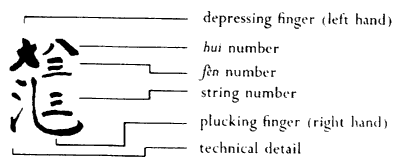
As you can see from these examples, notation is more than just a particular view of a particular musical idea - it will soon become apparent that musical notation has a profound effect on the nature of the ideas themselves, as well as indicating to us the musical priorities of the culture that invented them.
As you can imagine, these notations have a significant effect on what can be described and how it can be described. Virtually any piece of western classical music would be difficult to read or write using this system. What does this tell us about notation in general?
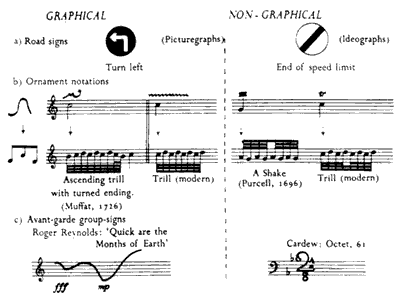
Above is a table from Hugo Cole's book Signs and Symbols, showing examples of two primary types of musical symbols used throughout the world. As you can see, this division also applies to other symbols we use, including our written languages. Symbols either describe their meaning by graphical similarity (picturegraphs/pictograms) or through less obvious, more abstract associations (although these may well have once been graphical too), (ideograms).
An Example
Also taken from Hugo Cole's book. Take a very simple human verbal response and, through a variety of processes of varying complexity, investigate the varieties of notation appropriate:
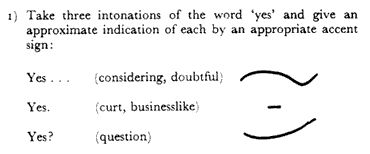 |
 |
 |
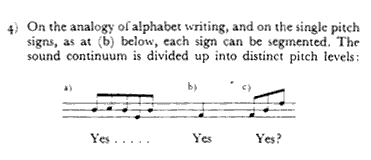 |
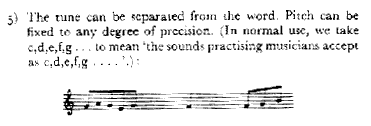 |
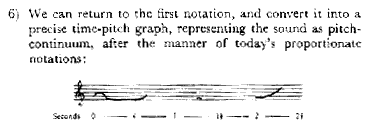 |
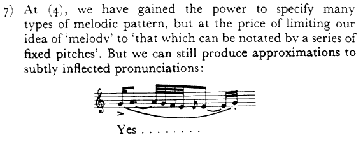 |
Errors in Notation
Perhaps unusually, notation is not always practised precisely, even by those of whom one might expect more. The following are a variety of notational errors, made deliberately, by mistake or, possibly, through prejudice. Can you tell what the errors are?


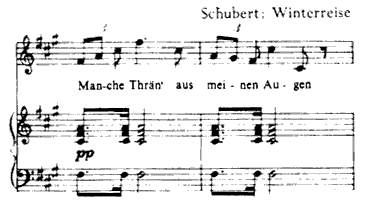
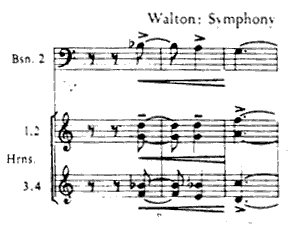

Complex/Confusing Notation
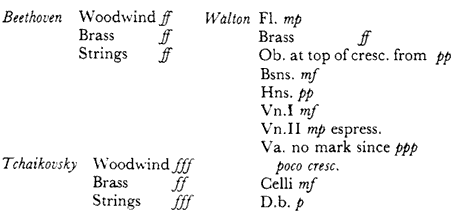
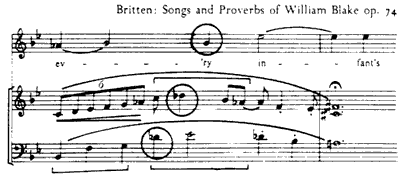


Notation in the Twentieth Century
Since the early days of western notation, certain elements have become more and more explicitly governed by notation and at the same time, the complexity of the musical grammar of these ideas has also become more complex as composers have sought to achieve ever more original ideas. The first two examples, both from Stockhausen show one aspect of this problem, specifically here with the complexity of dynamic information making both the reading and performance of such material very difficult:
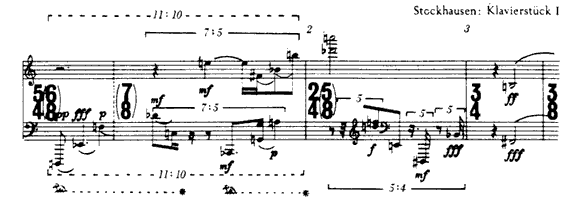
Following are a number of examples of ways in which composers have attempted to overcome this problem. See if you think this is what happens:

|
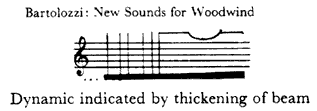

|
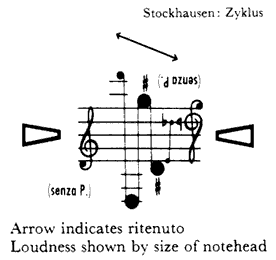
|
Complexity and Simplicity
Boulez Le Marteau Sans Maitre original
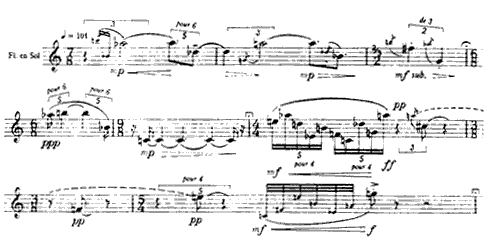
Boulez Le Marteau Sans Maitre alternative version

Many Notations
There follows a variety of examples of different forms of notation. See how well you think they communicate. Why have none of these, or, for that matter, any of the other examples of these really come into use? Or have they? Can you think of any examples which might have done? Why do you think these composers felt the need to experiment in these ways?
You may click on most of these examples to see larger versions.
Earle Brown Available Forms
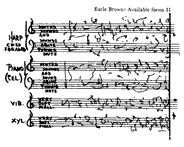
Robert Moran Four Visions No.2 >>>
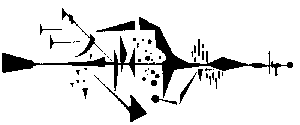
Christian Wolf Duet 2
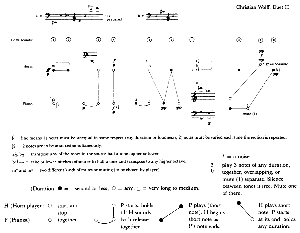
Credentials >>>
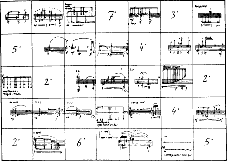
Morton Feldman Intersection 3
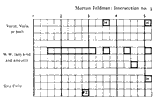
Karlheinz Stockhausen Zyklus >>>
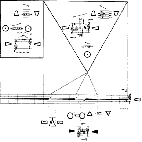
Karlheinz Stockhausen Zyklus

Cornelius Cardew Octet '61 (not clickable)
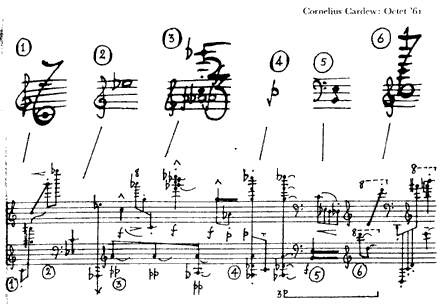
And finally, something to make you wonder how important all this really is...

